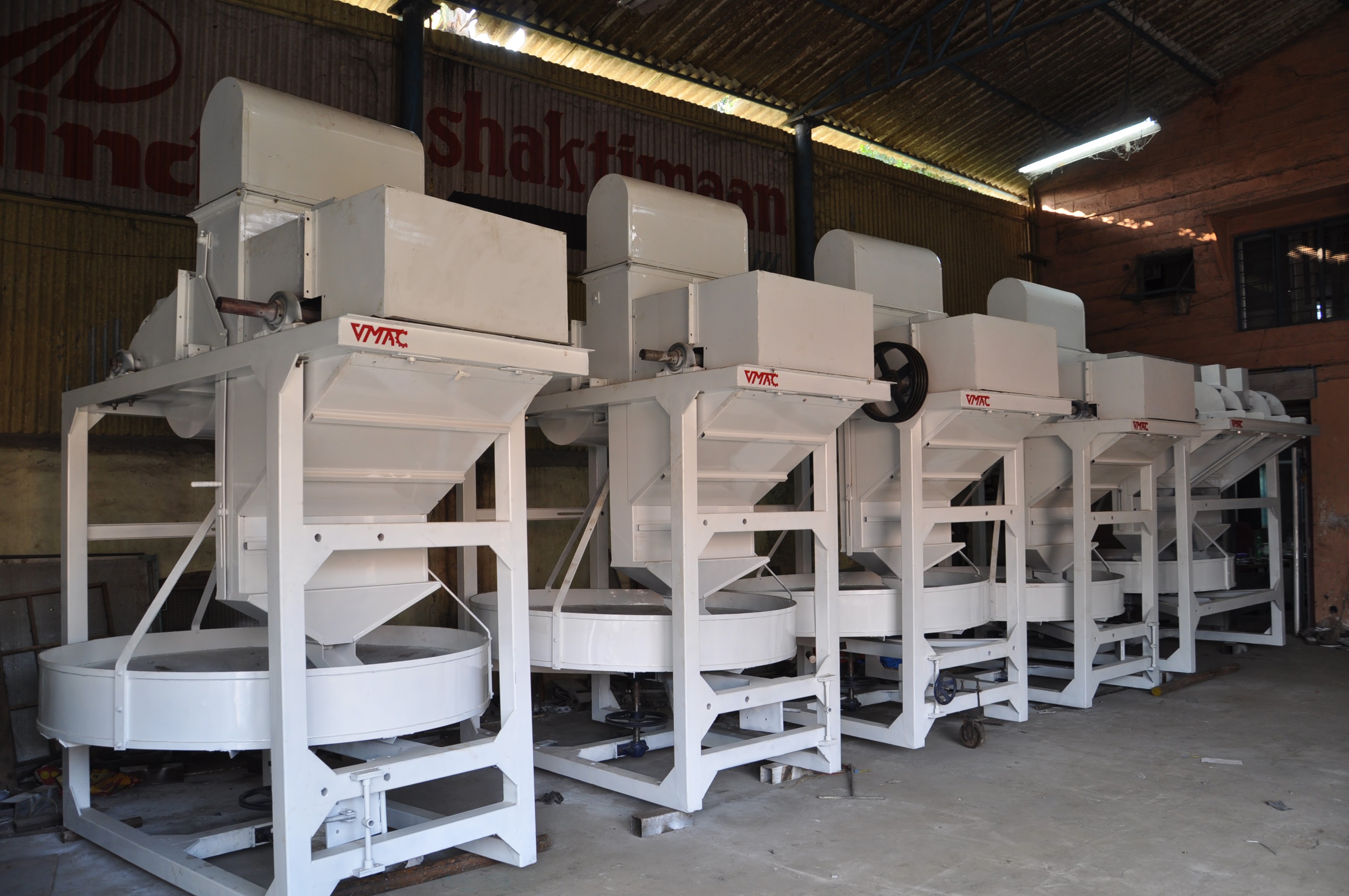
Production
Mastering Coffee Production
At Vmac Industries, we've mastered the balance between traditional craftsmanship and modern technology.
Discover how regular upkeep, strategic planning, and professional support can keep your coffee processing equipment running at peak performance for years to come.
Effective maintenance and servicing strategies are crucial for getting the most out of your coffee processing equipment. Whether you operate a small specialty roastery or a large-scale production plant, well-maintained machinery minimizes downtime, ensures consistent product quality, and protects your bottom line. This guide explores the importance of a structured maintenance approach, the benefits of professional servicing, and best practices that can significantly prolong your coffee machinery’s lifespan.
Unplanned breakdowns disrupt your production schedule, delaying orders and frustrating customers. By spotting potential issues early—whether it’s a worn-out part or misaligned belt—you can schedule repairs at convenient times and maintain a steady workflow.
Equipment that’s out of calibration or working under stress can produce inconsistent results. For instance, a poorly maintained coffee huller may under-hull or damage beans, leading to defects in the final cup.
While some producers attempt to cut costs by deferring maintenance, they often end up spending more on large-scale repairs or part replacements later. Consistent upkeep spreads costs over time and prevents expensive emergency fixes.
Well-maintained machines naturally last longer, safeguarding your initial investment. You avoid premature machine retirements or the need to purchase new equipment ahead of schedule.
Preventive Maintenance
- Regularly scheduled tasks—like lubrication, cleaning, and small part replacements—that preserve machine functionality and avoid sudden breakdowns.
Predictive Maintenance
- Uses sensors or performance data to anticipate failures. For example, measuring vibration or temperature on roaster motors can alert operators to impending issues.
Corrective (Reactive) Maintenance
- Undertaken when machines fail unexpectedly or produce subpar results, requiring immediate attention. While inevitable at times, a robust maintenance plan aims to minimize this scenario.
Overhaul or Refurbishing
- Periodically, a major teardown or rework may be needed to restore machinery to near-new performance. Though more expensive, it can significantly extend equipment lifespan.
Cleaning and Dust Removal
Coffee chaff, husks, or grounds can accumulate quickly. Clearing them from machine surfaces, screens, and vents each day prevents blockages and fire hazards (particularly in roasters).
Lubrication
Bearings, gears, and moving components may need frequent lubrication to reduce friction and wear.
Visual Inspections
Catch cracks, loose bolts, or fraying belts early by encouraging operators to report abnormal sounds or machine vibrations.
Calibration
Critical for roast consistency and bean processing (e.g., huller pressure, sorting machine angles).
Belt Tension and Alignment
Misaligned belts cause inefficiencies and premature wear on pulleys or motors.
Motor and Gearbox Checks
Inspect for oil leaks, overheating, or unusual noises—key indicators of impending mechanical failure.
Comprehensive Dismantling and Cleaning
Removing built-up residues or blockages that might have escaped routine checks.
Part Replacements
Swap out filters, gaskets, or worn bearings before they fail, ensuring smooth operation in the following year.
Software and Sensor Updates
If your machinery features automation or IoT capabilities, updating firmware ensures optimal performance and security.
Manufacturers and specialized service providers understand machine quirks and have diagnostic tools to pinpoint issues quickly. Their expertise often leads to more accurate fixes.
Working with an authorized service network ensures you receive authentic parts that fit perfectly and maintain original performance specs. Additionally, parts and labor may come with warranty coverage, offering extra peace of mind.
Service visits are an opportunity for in-house staff to learn from professionals—picking up insights on machine operation, troubleshooting, or routine tasks that can stave off bigger repairs.
Inventory Your Equipment
List each machine—hulker, roaster, gravity separator, pulper—with make, model, and known quirks.
Consult Manufacturer Guidelines
Follow recommended intervals for oil changes, part inspections, or major overhauls.
Assign Responsibilities
Decide which tasks operators can handle internally (e.g., daily cleaning, lubrication) and which require professional servicing.
Use a Tracking System
Spreadsheets or specialized software let you log completed tasks, parts used, and upcoming service dates—essential for larger facilities.
Scheduling Repairs Off-Peak
Plan major tasks for your slow season or during lower harvest volumes to minimize disruptions.
Bulk Part Orders
Stock key components to avoid waiting on deliveries when unexpected wear occurs.
Emergency Protocols
Develop a response plan for sudden machinery failures—who to call, how to reroute production, and how to communicate delays to buyers.
Track how often you experience production stoppages. A reduction in unscheduled halts indicates your maintenance plan is working.
If a roaster or huller operates efficiently for 10-15 years instead of needing replacement at year 8, you save heavily on capital expenditures.
Well-maintained machines produce consistent results, strengthening your reputation among specialty coffee buyers and roasters.
A clean, smoothly running facility fosters a safer environment, improving staff satisfaction and reducing turnover.
Maintenance and servicing may not be as exciting as discovering a new coffee varietal or launching a cutting-edge roaster, but it’s every bit as pivotal in sustaining a profitable coffee operation. By adhering to a well-structured maintenance plan, leveraging professional expertise, and prioritizing predictive diagnostics, you preserve the longevity and performance of your coffee machinery. The payoff? Lower operational costs, better-quality beans, and the peace of mind that comes from knowing your equipment is always ready to tackle the next busy season.
Lastest blog posts